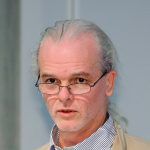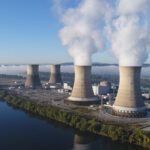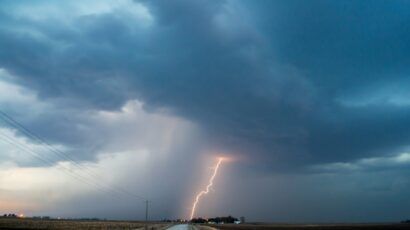Deconstructing the nuclear industry
By Mycle Schneider, Antony Froggatt | July 27, 2015
Released on July 15, the World Nuclear Industry Status Report 2015 (WNISR 2015) is the latest independent assessment of nuclear energy trends in a series first published in 1992. This year’s report comes at a time when most energy and environmental experts shy away from the words “nuclear renaissance” but some view nuclear power as an indispensable substitute for fossil fuels in global efforts to combat climate change. Current trends, however, suggest that a rapid ramp-up of nuclear power is unlikely, and that renewable energy is surging past nuclear power in many countries. Here are a few of the report’s key findings:
Nuclear electricity generation. By mid-2015, 30 countries were generating electricity from nuclear power. Nuclear plants generated 2,410 net terawatt-hours of electricity last year, a 2.2 percent increase over the previous year but close to 10 percent below the 2006 historic peak—by comparison, solar power surged by 38 percent and wind by 10 percent. A surprising eight countries (China, Hungary, India, Russia, Slovenia, South Africa, South Korea, and Taiwan) achieved their greatest nuclear production in 2014, but of these countries only China and Russia started up new reactors during the year. The gains in other countries were essentially a result of uprating or better management at existing power plants.
Although nuclear electricity generation increased last year, nuclear energy’s share of global commercial electricity generation has changed little over the past three years. In 2014, nuclear power was 10.8 percent of the global mix. As in previous years, the “big five” countries—the United States, France, Russia, South Korea, and China—generated more than two-thirds of all nuclear electricity in the world. The United States and France accounted for half of all global nuclear production, and France alone generated half of the European Union's nuclear power.
Construction starts and delays. WNISR 2015 goes further and deeper than previous reports in analyzing the pace of nuclear power plant construction: the length of the process, the reasons for delays, the number of projects that have been cancelled or suspended, and how construction trends vary from country to country. These are limiting factors in any plan for a global scale-up of nuclear power.
The average construction time of the 40 units that started up in nine countries since 2005—all but one (in Argentina) in Asia or Eastern Europe—was 9.4 years, with a large range from 4 to 36 years. Construction starts plunged from 15 in 2010 to three in 2014. There are currently 62 reactors under construction, five fewer than a year ago, and at least three-quarters of these projects are facing delays. In 10 of 14 countries that are building new reactors, all projects are delayed, many by years. Five reactors that are “under construction” are projects that began more than 30 years ago.
For the first time, this year’s report devotes a full chapter to Generation III+ reactors such as the Westinghouse AP1000, Rosatom AES-2006, and Areva EPR—advanced reactors designed to improve the safety and economics of nuclear power. These reactors are not proving easy to build: By May 2015, 18 next-generation reactors were under construction, but only two projects were still on schedule; the rest were running behind by two to nine years. This includes the AP1000s being built at the Summer and Vogtle nuclear plants in the United States, which after only two years of construction are late by at least two years.
Generation III+ reactors were originally seen as a transition to even more advanced Generation IV reactors, but if Generation III+ reactors fail, the future for the nuclear industry looks bleak. Small Modular Reactors (SMRs) or radically new reactor designs, known as Generation IV and optimistically touted by some nuclear lobbyists as the key to de-carbonizing the global economy, are still decades away from commercial deployment. Meantime, existing nuclear plants around the world are edging toward retirement, with an average age that has been increasing steadily and now stands at 28.8 years.
Nuclear heavyweights. In both France and Japan, two of the three countries with the largest installed nuclear capacity (the United States is number one), the nuclear industry is in deep trouble. Although Japan still has 40 reactors that are counted as installed capacity, none of them operated in 2014. It was the first time in 50 years that Japan was without nuclear electricity for an entire calendar year. And no lights went out. As of today, it appears likely that two reactors, at most, will restart in Japan this year.
In France, long the world’s role model for how to successfully develop nuclear energy, the National Assembly passed an energy bill that defines a target to reduce nuclear’s share of the electricity mix from three-quarters to half by 2025. The French state-controlled energy group Areva—the self-proclaimed global leader in nuclear energy—went technically bankrupt after reporting massive losses for four years in a row. Credit-rating agencies have downgraded Areva’s long-term debt to “junk,” and the company’s share price plunged to a record low earlier this month, a level 90 percent below its record high in 2007.
Areva is the designated builder for the Hinkley Point C project, which was to be the United Kingdom’s first new reactor in decades, and had planned to contribute 10 percent of the investment. That project is now in shambles. In addition to Areva’s financial woes, the pressure vessels for the Flamanville (France) and Taishan (China) EPRs—the same European Pressurized Water Reactor design planned for Hinkley Point C—have "very serious" material defects, the French Nuclear Safety Authority told a parliamentary hearing in April 2015.
The rise of renewables. In the United Kingdom, electricity output from renewables (including hydropower) has overtaken the output from nuclear. Meanwhile, China, Germany, Japan, Brazil, India, Mexico, the Netherlands, and Spain generated more power from non-hydro renewables than from nuclear in 2014. Compared with 1997, when the Kyoto Protocol on climate change was signed, in 2014 there was an additional 694 terawatt-hours of wind power and 185 terawatt-hours of solar photovoltaics—each outpacing nuclear's additional 165 terawatt-hours.
What is spectacular is the extent to which the nuclear industry and many decision-makers are appearing to ignore the financial and technical realities of 2015, and the generalized move toward decentralized electricity generation and storage. The industry’s track record of delays and cost overruns, coupled with the urgency of replacing fossil fuels with efficiency improvements and low-carbon sources of energy, do not bode well for the long-term future of the industry.
Together, we make the world safer.
The Bulletin elevates expert voices above the noise. But as an independent nonprofit organization, our operations depend on the support of readers like you. Help us continue to deliver quality journalism that holds leaders accountable. Your support of our work at any level is important. In return, we promise our coverage will be understandable, influential, vigilant, solution-oriented, and fair-minded. Together we can make a difference.
Topics: Analysis, Nuclear Energy
















